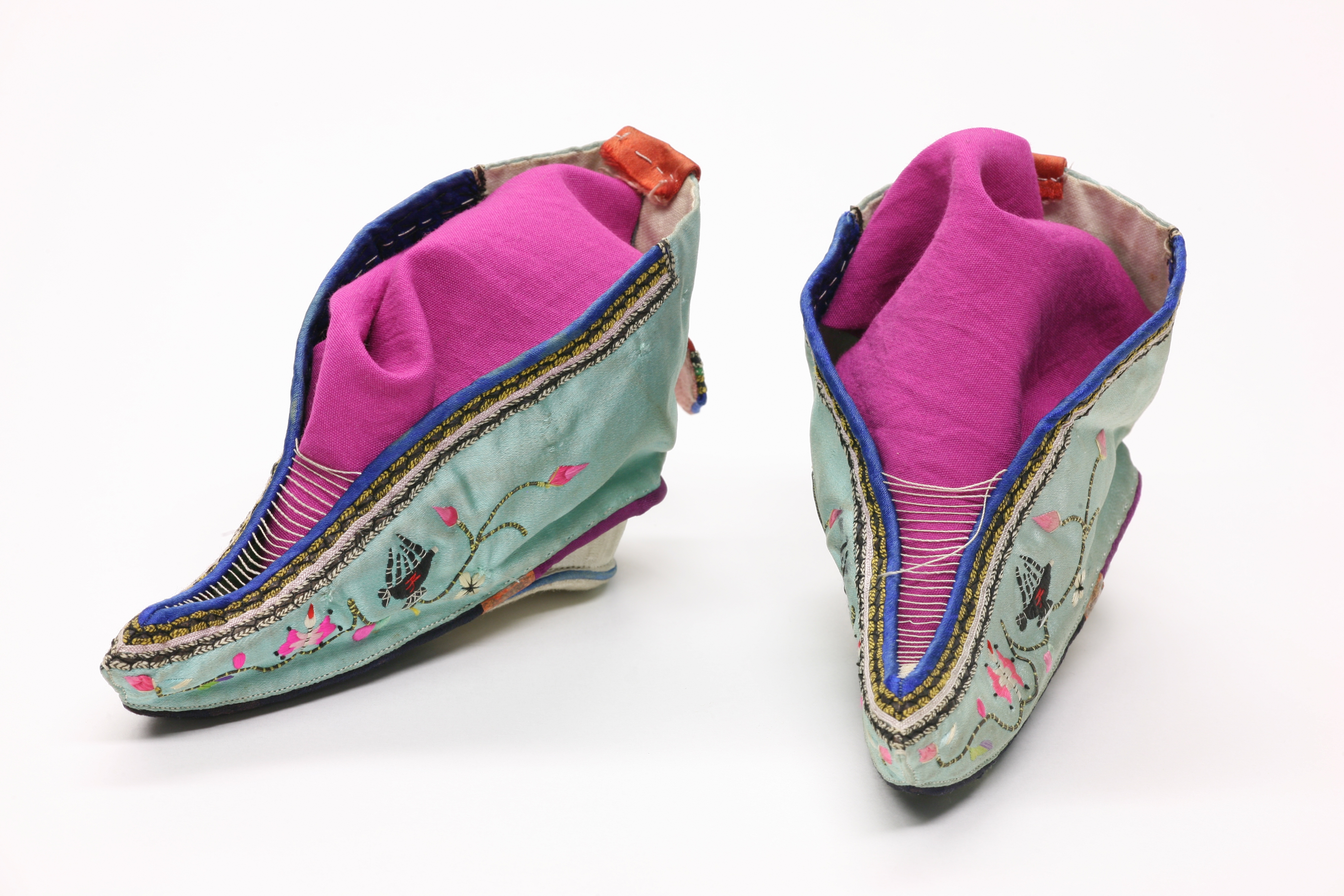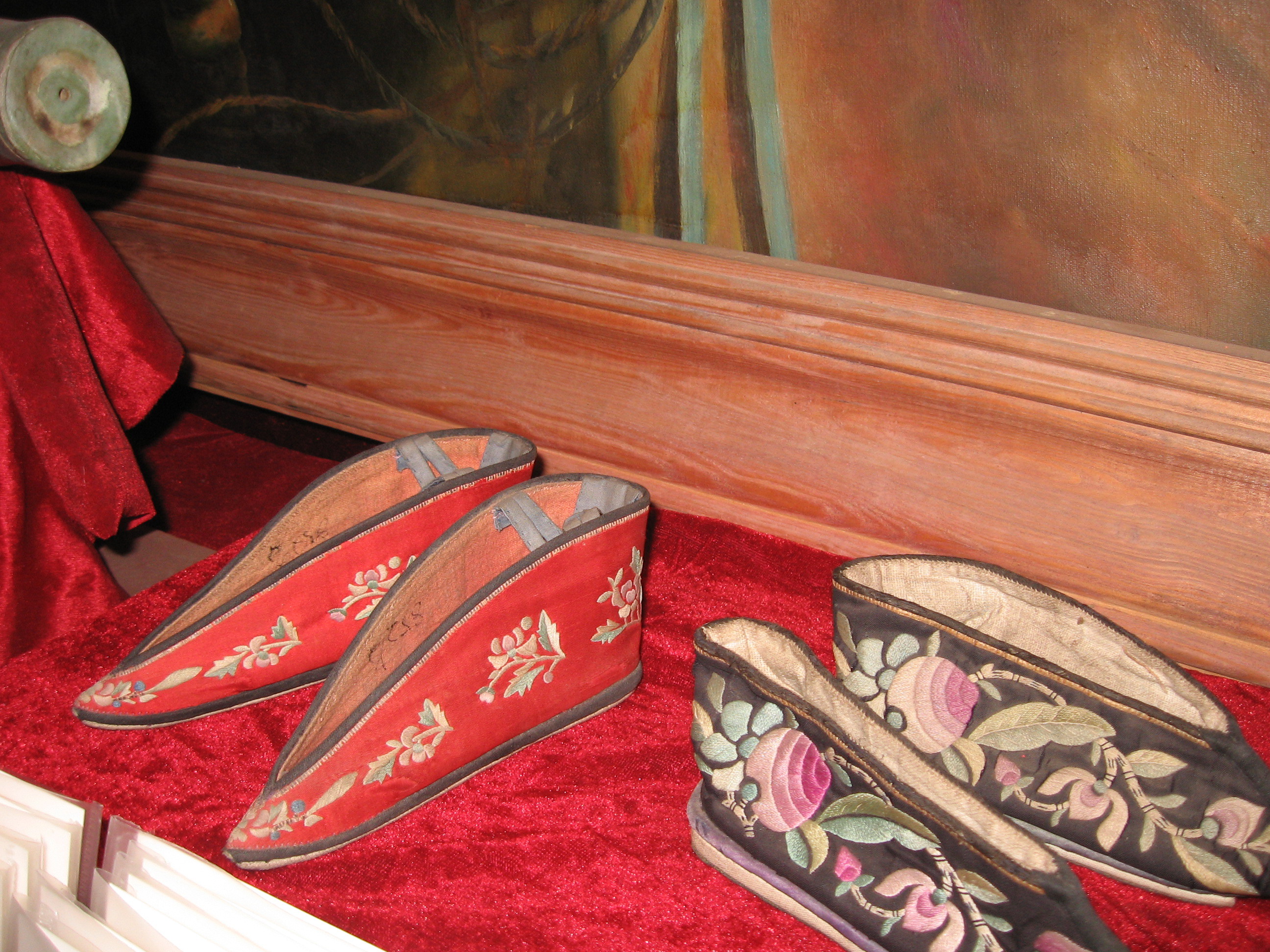Valenki Shoe—RUSSIA
This shoe is made out of wool and is worn during the bitterly cold Russian winters. To make these beauties, the wool is doused in chemicals and water, dried, and formed into shape. They were popular during the 20th century, but they were first made in the 1700s. They are rustic, hardy, and most commonly worn by the peasant class.

The soles of these shoes are made of woven rope and are pliable/flat (not very healthy for the arch of the foot!) Brightly colored canvas is sewn across the top in a broad band to protect the foot/toes. Chunky threading and embroidery is used to secure the coarse cloth to the rope bottom. Pieces of lace or rope often wrap around the ankle to give the leg a more slender/delicate look and to secure the shoe to the foot. The design came from Spain in 1322 and they were historically worn by the Spanish peasantry.
 |
| http://commons.wikimedia.org/wiki/File:Blue_los_espadrilles.jpg |
They are flat, made of water-buffalo skin, and have a red/black goat skin covering on the top. The shoes leapt across social boundaries—they were worn by the peasantry, wealthy people, and even blushing brides! They are over 600 years old and were produced in the ancient land of Anatolia (modern day Turkey). “Saya” yarn is used to sew the sole to the bright top fabric. The art of making the Yemeni shoes is dying because it takes long hours and great skill to make one pair.
Links to pictures here: http://yemenicihayriusta.com.tr/basin_en.html
http://pocketcultures.com/2007/08/16/yemeni-shoes-and-kutnu-fabrics/
Abarcas—SPAIN
These Mediterranean working class slippers were made popular in Menorca, a Balearic Island to the East of Mallorca, Spain. It was traditionally worn by the fisherman and peasant farmers who lived there. The style was first referenced in the 11th century; they are made with leather cowhide and rubber. Today, the shoes are immensely popular in Europe, are brightly colored, and have a leather upper. As I own a pair from Spain myself, I can say they are very sturdy and comfortable!
 |
| http://en.wikipedia.org/wiki/Avarca_(shoe) |
Me modeling my pair of Abarcas!
Rawhide Sandals—UGANDAProduced by the Acholi tribe in Uganda, this footwear is made of treated leather that is colored with striped pigments. It is created with a broad sole (which was good for walking in heat, cold, etc). The leather was traditionally softened in cow manure and pressed between layers of bark.
_01.jpg) |
| http://en.wikipedia.org/wiki/Sandal |
These tiny shoes were made for women with foot-bound feet in China. Foot-binding may have started in the Shang or Song Dynasty (10th century) because an emperor liked concubine women who had small feet. After that, foot-binding became a symbol of status and wealth—to be married into a good family, a woman was required to have bound feet. The archaic practice was banned in 1912 and almost completely obliterated during the communist rule of Mao Zedong (because women had to work the farms). The Lotus shoes are made from silk and cotton; they are brightly dyed and decorated with stylized plant forms (like lotus buds). The design is conical with a point at the end to give the illusion of larger feet under skirts.
 |
| http://en.wikipedia.org/wiki/Lotus_shoes |
 |
| http://commons.wikimedia.org/wiki/File:Foot_binding_shoes.jpg |
This iconic shoe was designed by Roger Vivier in 1954. It has a tall, slender heel, often with a platform on the sole. The stiletto is sexually suggestive, flatters the female figure, and is seductive. To me, it is a symbol for the rise of a working class woman—she wears high heels to office to be taken seriously by men. They are often made out of plastic, wood, leather, or any other prefabricated material today. They are worn throughout western countries, no matter how painful they may be! :D
 |
| http://commons.wikimedia.org/wiki/File:Leather_Fetish_Shoes.jpg |
 |
| http://en.wikipedia.org/wiki/Christian_Louboutin |
Sources:

No comments:
Post a Comment